This tahini pesto is an oil-free, nut-free, different to traditional basil pesto. Sesame seed paste provides the pesto an ultra-creamy and clean consistency. One of these pesto is nice for heat or chilly pasta dishes, and it’s additionally a flexible, contemporary sauce for summer season grain bowls, sandwiches, and salads.
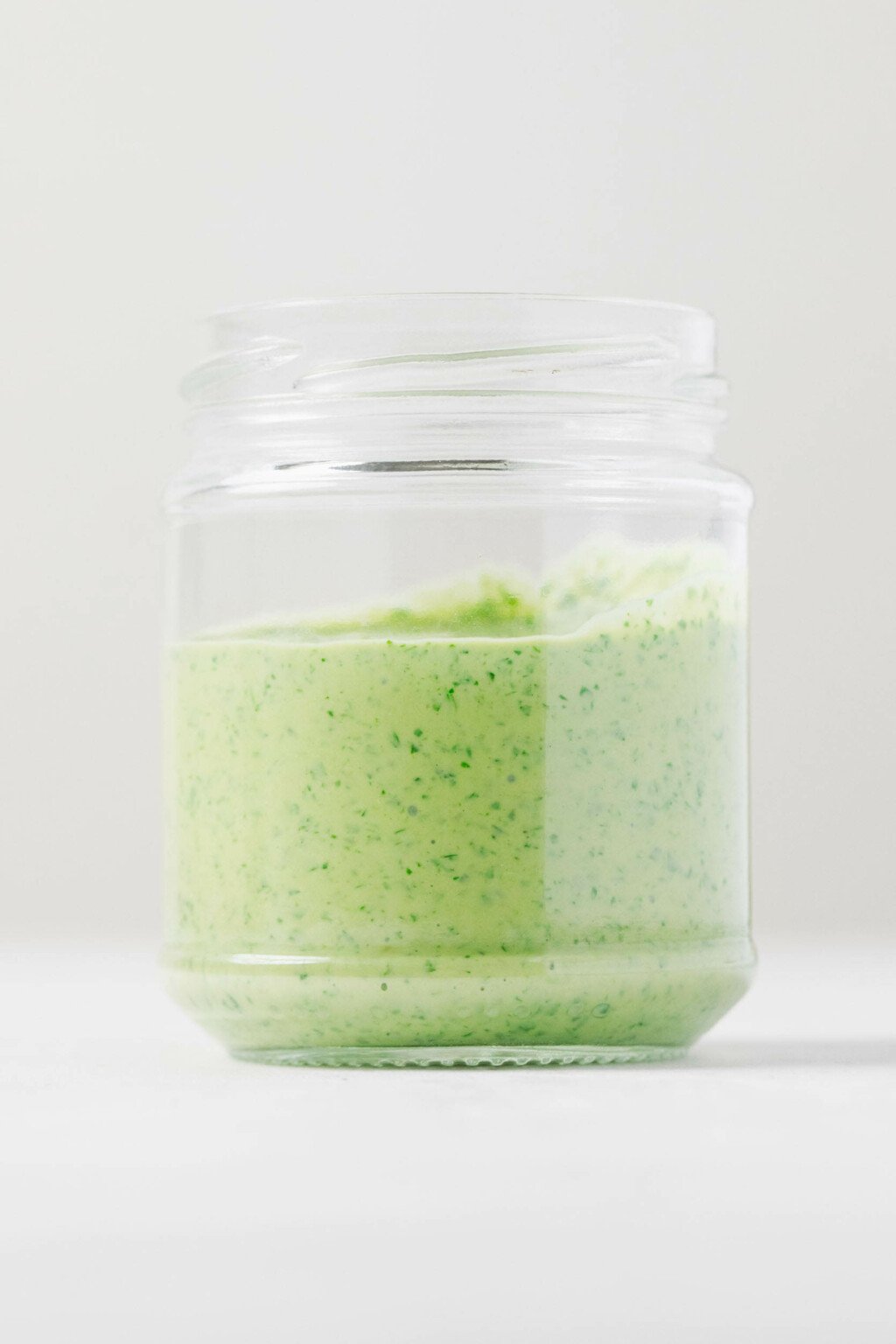
Days are lengthy, temperatures are scorching, and tomatoes are juicy.
It’s peak summer season, pals. Which signifies that it’s excessive time for pesto.
The plant-based pesto recipe that I’m sharing immediately is totally different from the extra “traditional” vegan pesto recipe that lives on this weblog.
That model is a vegan pesto with basil and cashews.
This can be a vegan tahini pesto—in different phrases, a pesto recipe that makes use of one among my favourite components, tahini, as a base.
Why tahini?
Let’s be trustworthy: conventional pesto is a gorgeous factor.
For years now, the easy swap of utilizing dietary yeast or cashew parmesan rather than parmesan cheese has allowed me to simply create a vegan model of the Genovese sauce.
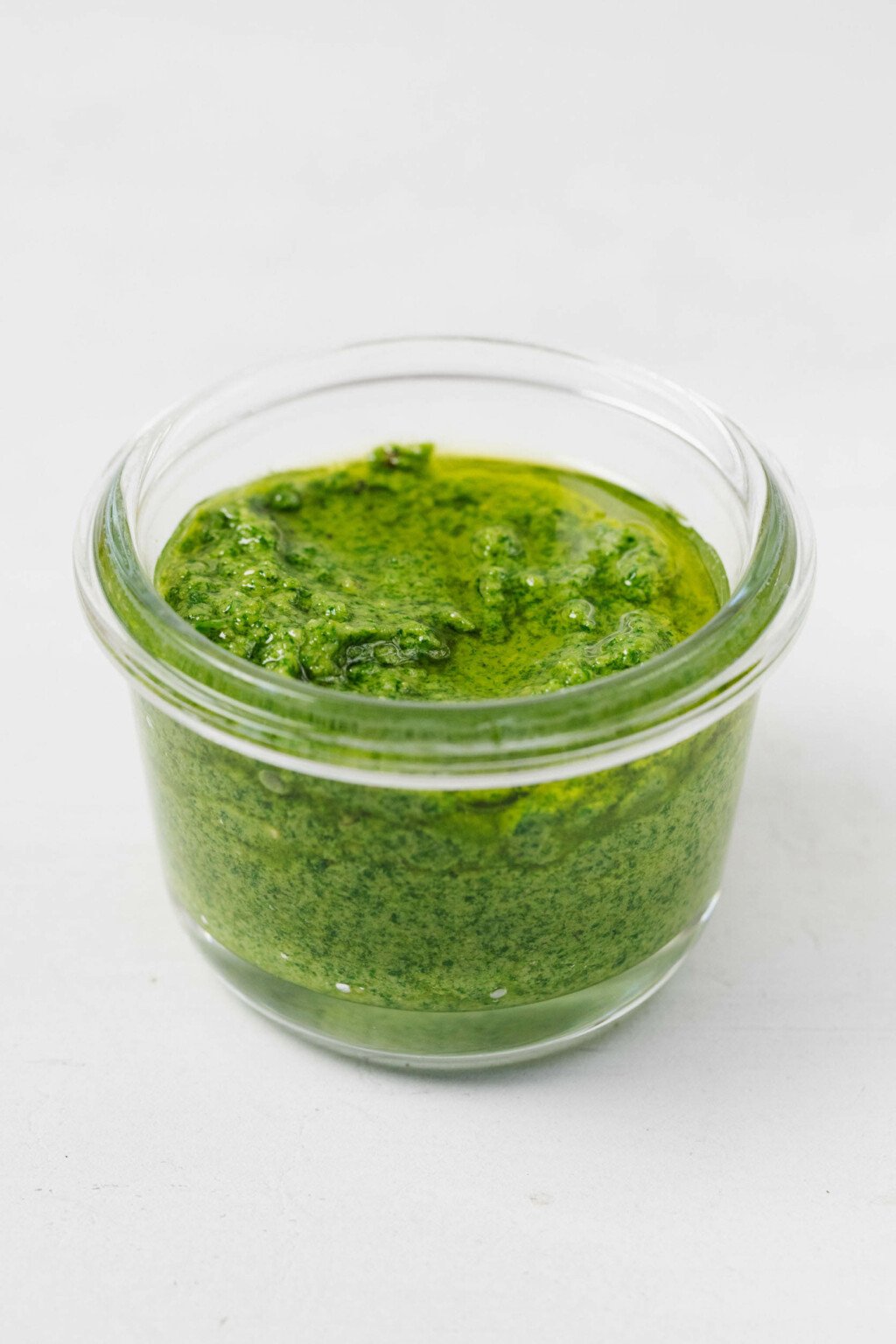

So, why mess with perfection?
That creamy texture!
The principle motive that I generally like to switch the standard mixture of olive oil and nuts with tahini in pesto is to create a creamy texture.
My common pesto is already on the thicker and creamier facet, versus variations which are extra coarse and oily.
However this model is additional creamy and clean. Tahini, or floor sesame paste, is to thank for that texture.
Think about all the creaminess of a tahini dressing recipe, however with flecks of contemporary, inexperienced basil all all through.



I like that consistency. Whereas common pesto pasta generally is a little “grainy” in texture, the pastas that you simply create with tahini pesto will probably be silky and wealthy.
Allergy-friedlier
Whereas it’s potential to have each nut and seed allergy symptoms, there are of us who’re allergic to tree nuts however to not seeds.
In case you have a tree nut allergy, then the pine nuts, walnuts, or cashews in conventional pesto might not be just right for you.
Sesame allergy can also be widespread, however it’s much less prevalent than tree nut allergy symptoms.
Many individuals who’ve tree nut allergy symptoms can tolerate pumpkin, sunflower, and sesame seeds. In consequence, tahini pesto is a extra inclusive possibility.
An oil-free pesto
Olive oil performs a giant position in my kitchen and, consequently, in my recipes. However I do know that I’ve readers who adhere to entire meals, plant-based diets, and that lots of them select to keep away from oils.
In consequence, I’m at all times comfortable once I can supply no oil recipe choices to my group.
Most of my tahini dressings match into that class, as do most of the choices in my assortment of vegan sauce recipes.
Tahini pesto, not like the normal pesto that’s decidedly oil-forward, is oil-free.
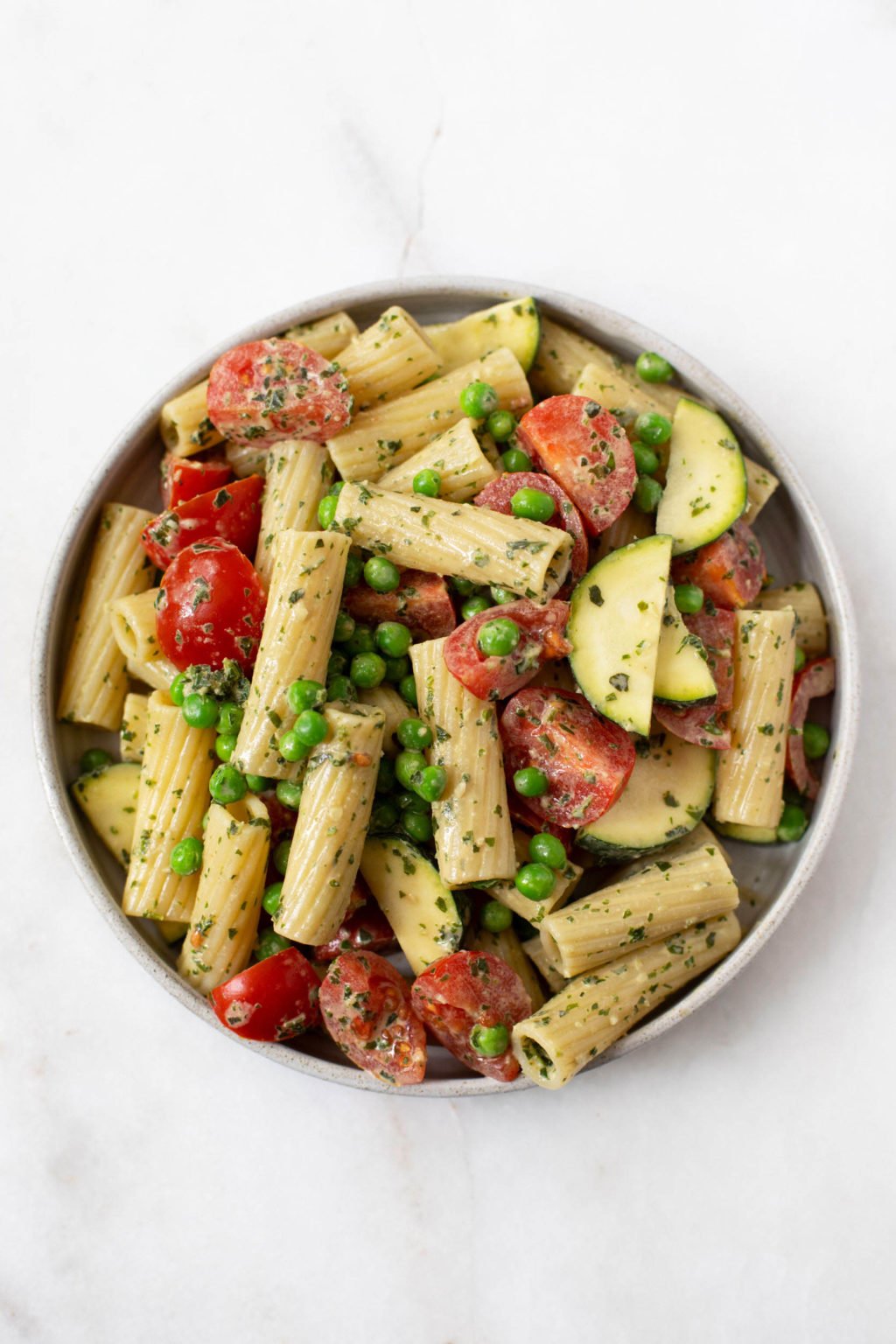

It’s the reply for individuals who love a bowl of summery pesto pasta, however not one which depends on olive oil as a primary ingredient.
The basil: to blanch or to not blanch?
Prior to now, I’ve talked about falling in love with the strategy of blanching after which icing basil earlier than mixing it into pesto.
This occurs in three steps: first, including basil leaves to boiling water for about thirty seconds, then surprising them in an ice tub, then patting them (very) dry.
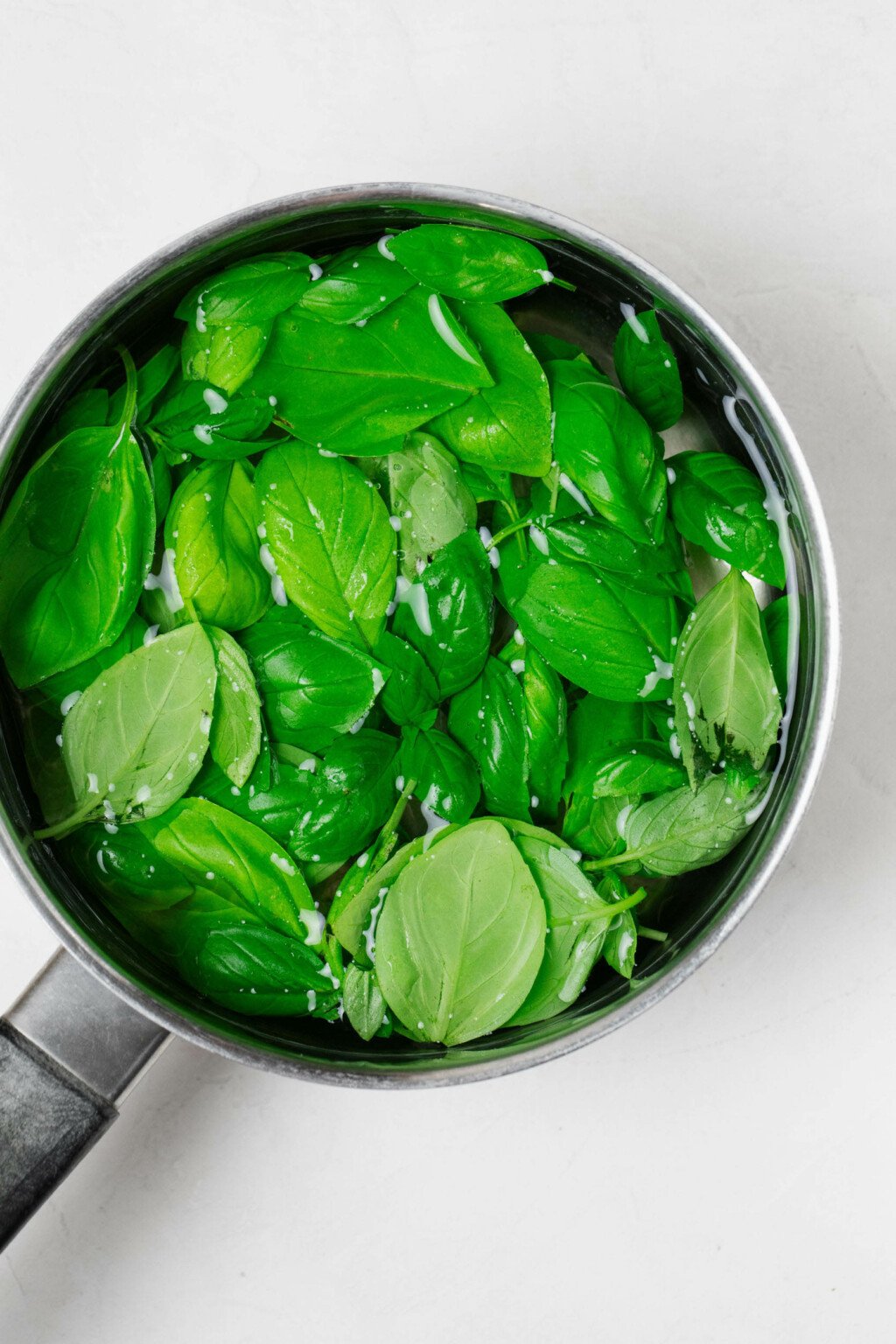

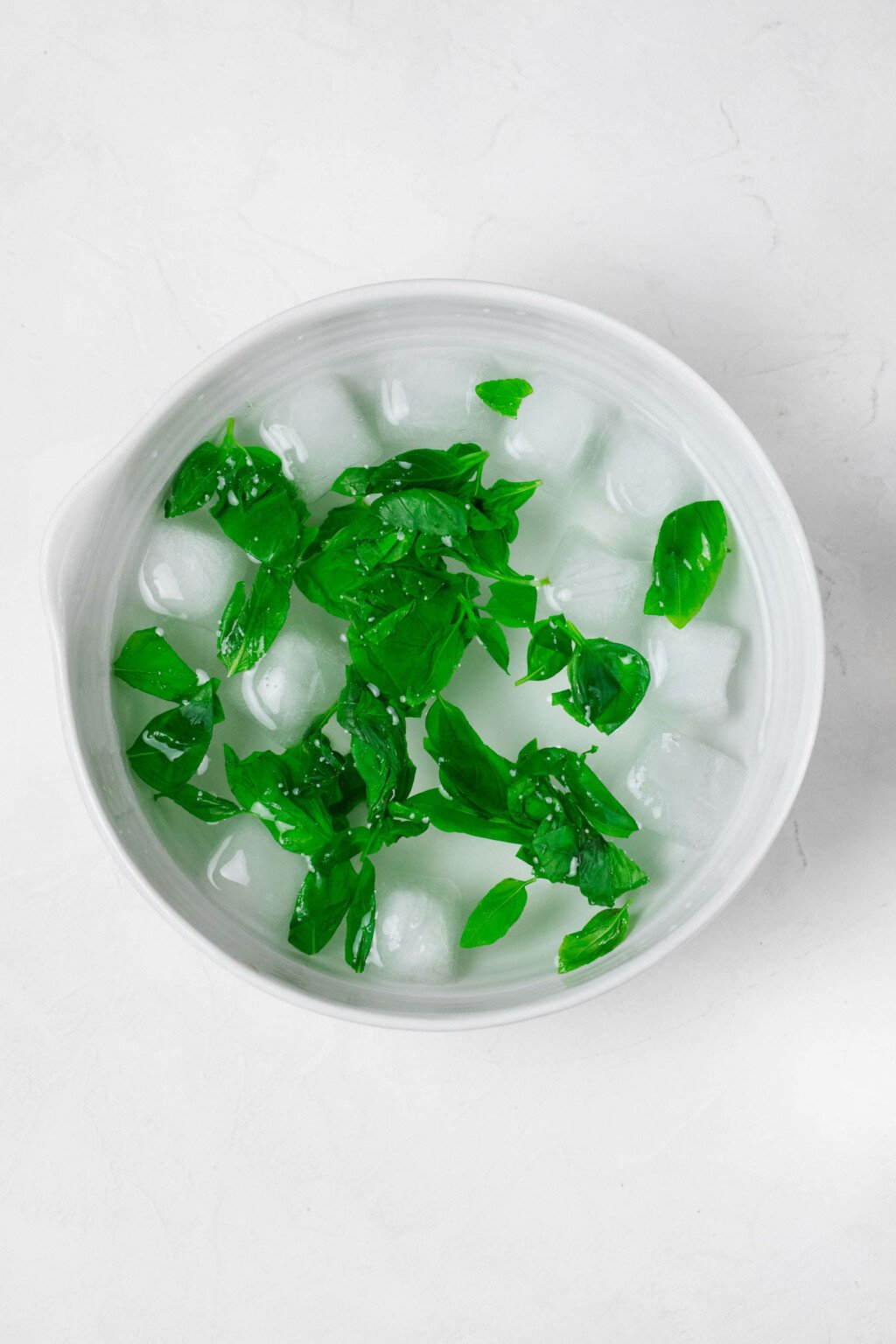

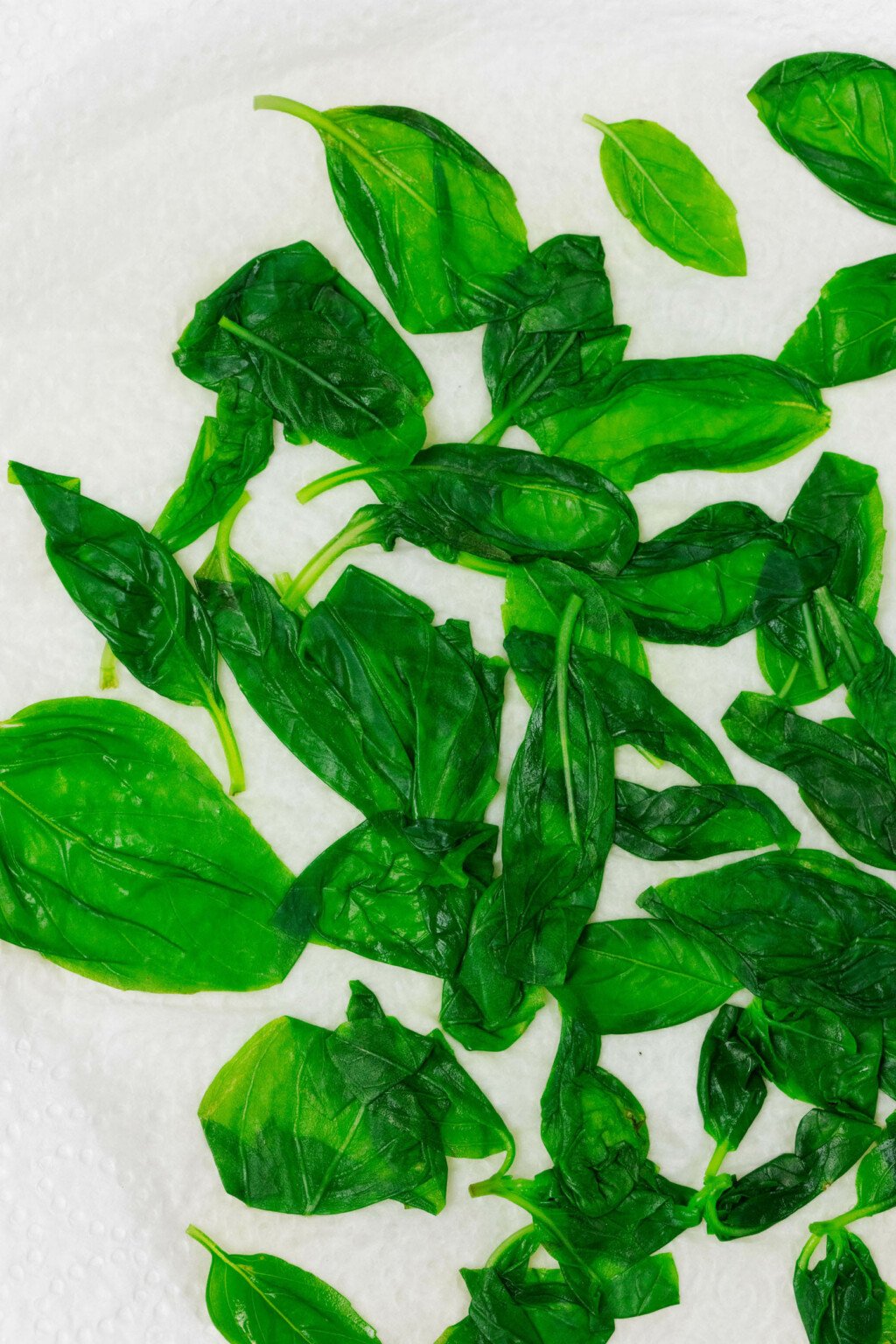

Why go to all this hassle?
Two causes. First, it truly helps to create a extra creamy pesto, which is apropos for the tahini pesto that I’m sharing immediately.
Second, blanching the basil helps to stop the browning that’s so commonplace as a jar of pesto is saved within the fridge.
Whereas slight browning doesn’t hassle many individuals, it does hassle me!
I like the enduring, shiny inexperienced shade and shiny taste of pesto that’s made with blanched basil. So, it has grow to be my default to make it that manner.
Within the recipe card for this recipe, I supply each choices: blanching and never blanching the basil previous to processing. If pace and comfort are your precedence, then you may forgo blanching.
Should you stay alone and prefer to retailer basil for a number of days and are turned off by discoloration, then perhaps give blanching a strive? I feel it’s actually worthwhile (and there are others who agree!).
How you can make creamy tahini pesto
Whether or not you blanch your basil or not, the steps for making it are fairly easy. Right here’s how the method goes.
Step 1: Collect your components
For this tahini pesto recipe, you should use both all basil or a mixture of basil and parsley. I’ve made and beloved each variations; all-basil is conventional, whereas basil and parsley has slightly extra peppery, earthy taste.
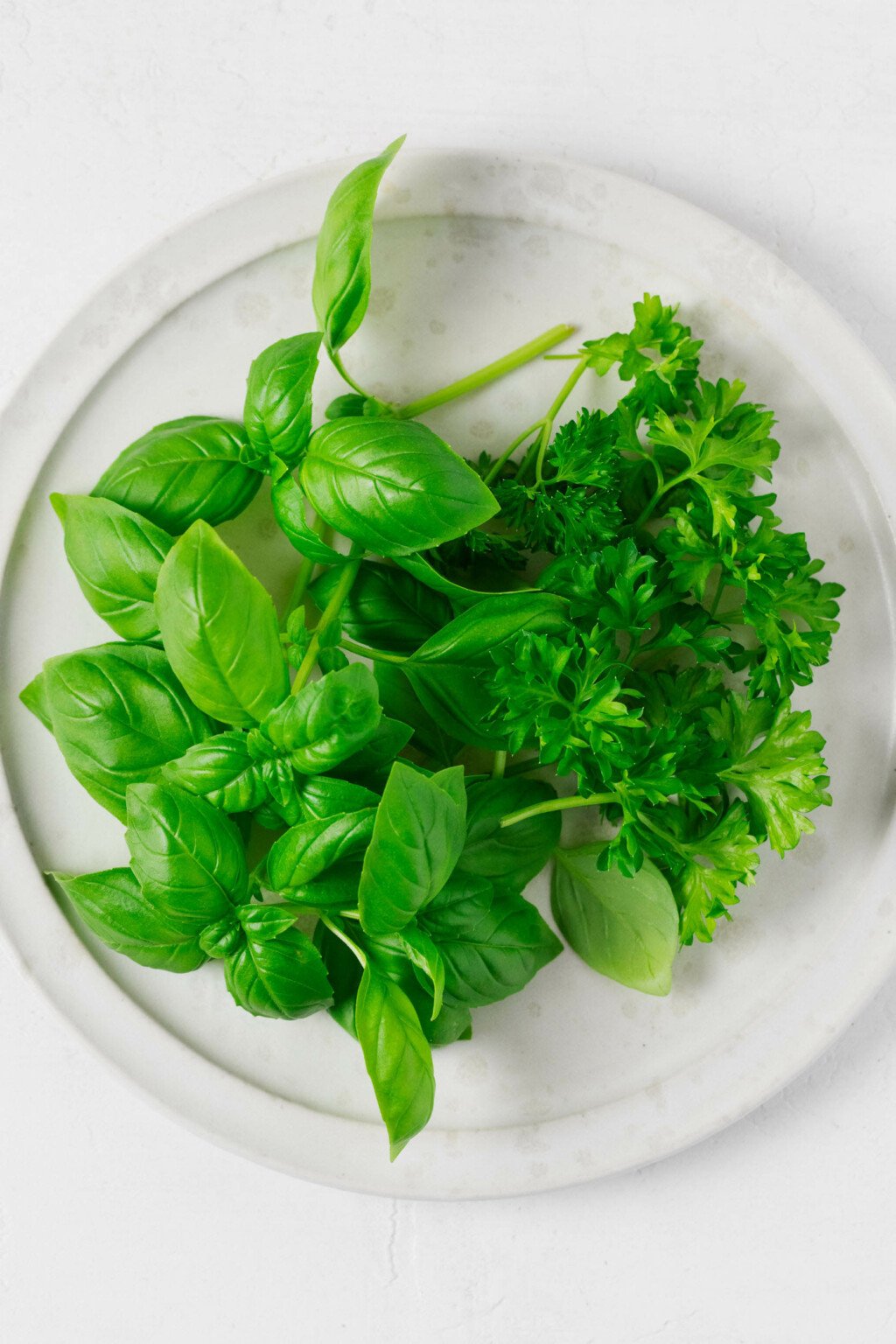

Different components for this recipe:
- Tahini
- Garlic
- Lemon juice
- Dietary yeast
- Water
- Salt
- Pepper
A notice in regards to the tahini: tahini might be both uncooked, which is fairly unusual, or made with toasted sesame seeds. I like to recommend the latter, because it’s simpler to search out, cheaper, and, I feel, tastes higher.
Step 2: Blanch the basil (if you wish to)
To do that, convey a pot of water to a boil. Add your basil leaves and blanch them for about 15 seconds.
Use a slotted spoon to take away them from the water, then switch them instantly to an ice tub. Shock them for a couple of minutes.
Then, switch the basil leaves to tea towels or paper towels. Squeeze them firmly to get the surplus moisture out. At this level, you should use them within the pesto recipe.
Should you’re not blanching, go forward and transfer ahead to step 3.
Step 3: Course of
For the following step, all you might want to do is switch your entire components, minus the water, to a meals processor fitted with the S blade.
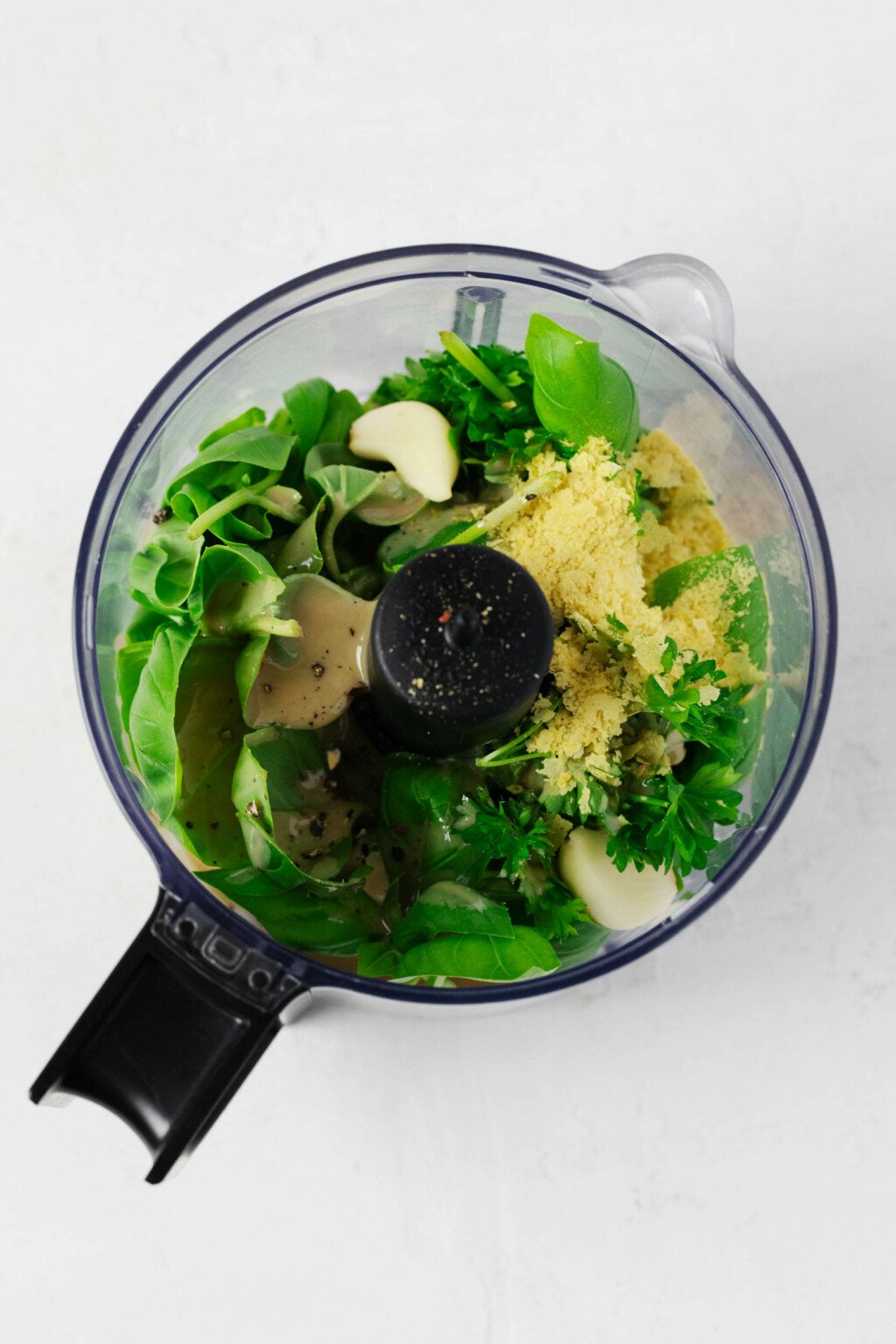

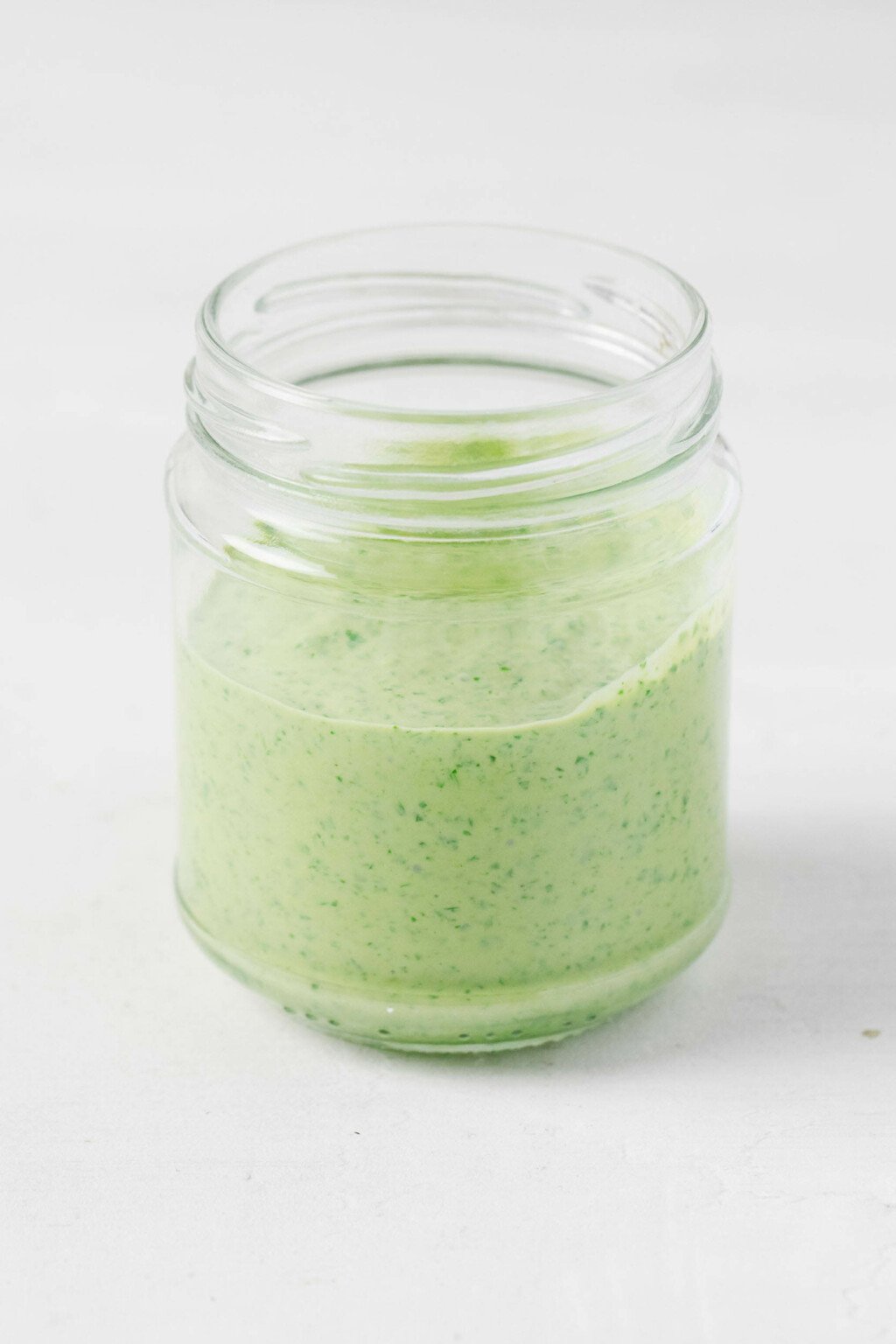

Pulse the components 10-15 occasions, sufficient to interrupt down the herbs.
Then, flip the processor on. Drizzle the water into the pouring spout. Mix the pesto for a couple of minute, then cease the machine to scrape the edges down.
Hold processing for one more minute or two, till the pesto is clean and creamy. You’re aiming for the feel of a thick sauce—so, a bit thicker than a tahini dressing.
Hold processing till the sauce is fairly clean (it’s advantageous if a number of the herbs are seen).
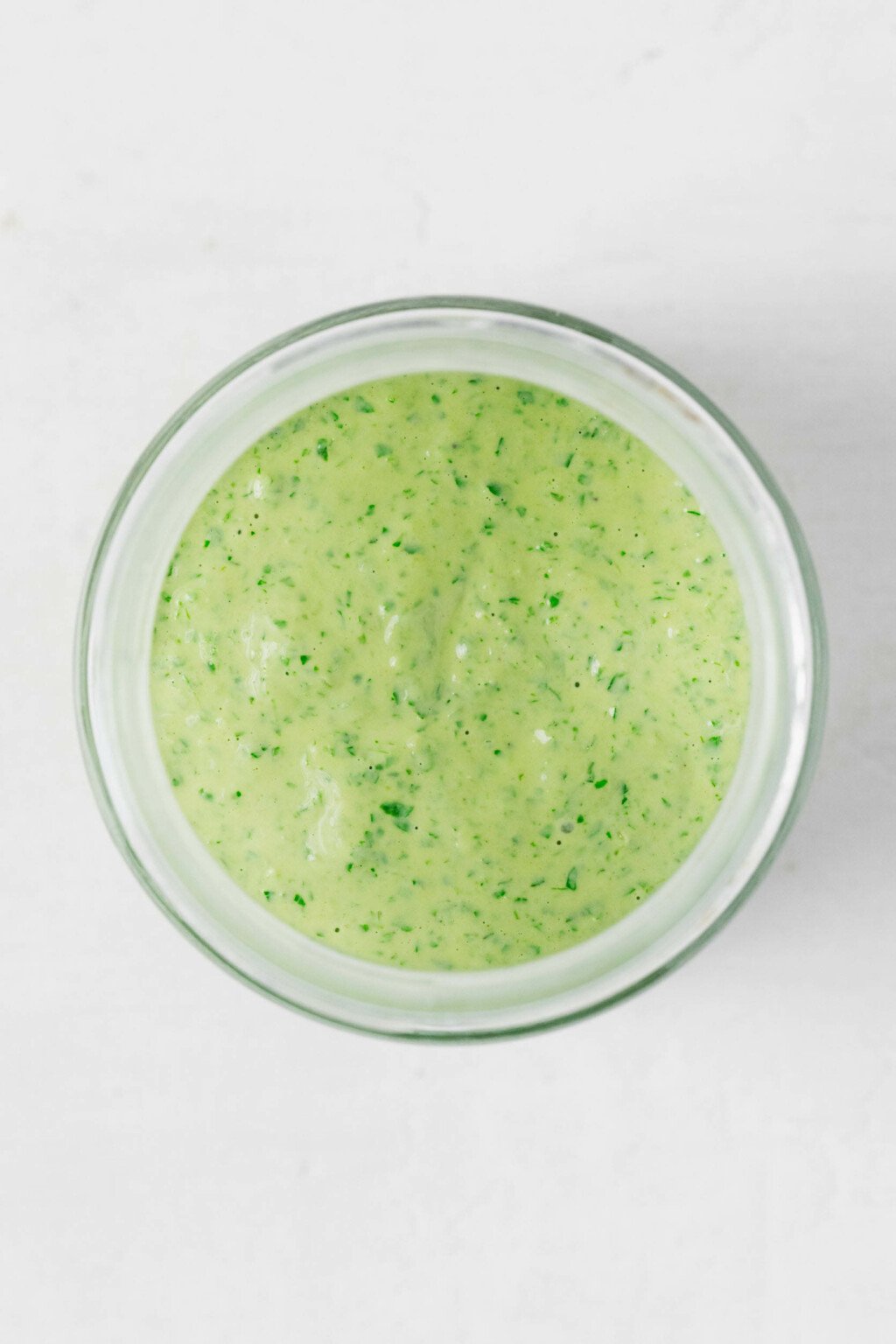

Lastly, style the tahini pesto sauce. Alter the lemon, salt and pepper as wanted.
At this level, your tahini pesto is able to serve, or you may retailer it within the fridge for as much as 4 days. You can too freeze the pesto for as much as eight weeks.
Serving solutions for tahini pesto
You need to use the tahini pesto in nearly any recipe that requires conventional pesto. Listed below are some concepts to get you began:
If including to pasta, you may add a splash of scorching pasta water to skinny the tahini pesto, or you may go away it simply the best way it’s for a thicker sauce.
And, for what it’s value, there’s a reasonably nice recipe for tahini pesto pasta with broccoli in The Vegan Week. Should you’re interested in that model, you could find the recipe on the Seed & Mill web site.
Onto the recipe!

Yields: 1 cup
- 2 cups tightly packed basil leaves (30g; substitute 1 1/2 cups / 20g tightly packed basil leaves and 1/2 cup / 10g tightly packed parsley)
- 6 tablespoons tahini (90g)
- 2 cloves garlic, roughly chopped
- 1/2 teaspoon salt
- 1 1/2 tablespoons freshly squeezed lemon juice
- 1 tablespoon dietary yeast
- 1/4 cup water (60ml)
Non-obligatory: Blanch Your Basil Leaves (to stop browning)
-
Deliver a medium pot of water to a boil over excessive warmth. Whereas the water is heating up, put together an ice tub in a medium sized bowl.
-
Add the basil to the new water. Blanch for 15 seconds, then use a slotted spoon to switch the basil to the ice tub. By the point you switch all of it, a lot of the basil can have blanched for about 30 seconds.
-
Permit the basil to stay within the ice tub for 3-5 minutes. Place a number of tea towels or paper towels onto your work floor and use the slotted spoon to switch the basil over to the towels. Use the towels to press the basil firmly, so that you simply take away all the extra ice water.
Put together the Pesto:
-
Switch your contemporary or blanched basil leaves to the bowl of a meals processor fitted with the S blade. Add the tahini, garlic, salt, pepper, lemon juice, and dietary yeast.
-
Pulse 10-15 occasions, sufficient to interrupt down the herbs.
-
Activate the meals processor. With the processor working, drizzle within the water by way of the processor’s pouring spout. Course of the pesto for a minute. Cease the processor, uncover it, and scrape down the edges of the bowl of the meals processor.
-
Get better the meals processor and proceed processing for one more minute, or till you may have a creamy, clean sauce. Add a further tablespoon of water, if wanted, to attain your required consistency.
-
Style the pesto and regulate lemon, salt and pepper as desired. Serve or retailer in an hermetic container within the fridge for as much as 4 days.
At this very second, I’m fascinated by utilizing this pleasant sauce on vegan caprese-style sandwiches, together with a few of my tofu feta. I guess it’ll be scrumptious.
Hope you discover many great makes use of for the tahini pesto, too! Get pleasure from it.
xo

